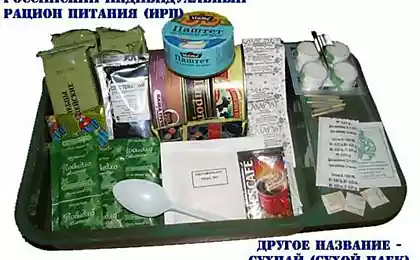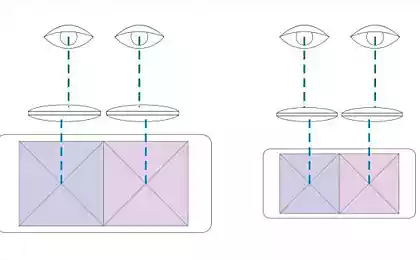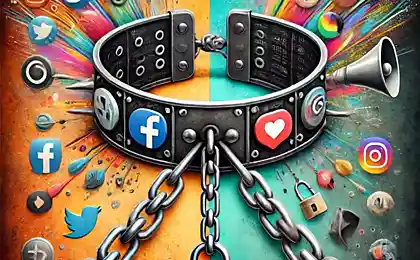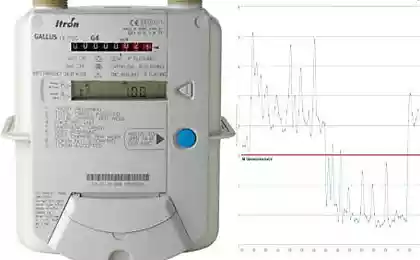887
Anatoly Shperh: it seems to me that the school turns into instant drink
Lately it seems to me that the school is transformed into a soluble drink. As coffee. A hundred years ago coffee was like a Chinese ceremony — Turk, the aroma of freshly roasted beans, terrace Breakfast café with fresh newspaper. Not so today. Plastic Cup, purchased on the fly from the car window.
There is, of course, school, and basic school buildings have not gone away. But its place in a child's life is rapidly declining.
You want your child passed the exam? Surely you expect not only in school, and looking for a tutor "on the side".
A child interested in sports? You lead him in the sports section, and this section is, most likely, not in school. "Dramatic circle, the circle on the picture," all of this — not in school. The school is scattered in clusters, scattered in different places. And traditional school — only one of them.

The school dissolved in ordinary life, the cloud surrounds the child and leads him, supporting and guiding. It is everywhere and nowhere. The walls of the classroom long ago crumbled, even if we still sometimes sit in the classroom listening to the teacher. School is not the place on which hangs a sign "GBOU SOSH". School (at the time) is getting any space, which is here and now used for training. In this sense, built specifically for training school building can not be a main educational space.
What kind of place can become the main? The answer is paradoxical — any where there is a possibility of a constructive activity for the student. Not passive consumption of information, namely the active constructive work, when he not only uses resources but also actively participates in their development. And actively sharing results with peers. The latter is very important, since it allows not only to assess their level of mastery relative to others, but to be in the role of an expert assessing the work of others. Trying on alternately as a pupil, master and expert, the child passes all stages of learning.
Such activities may carry and spontaneous — this definition fits the yard and passion, "who will make a slingshot that shoots furthest," but the true power of this activity gets only where it is planned specifically. Initially, this learning environment was the school. However, competent pedagogical designer can turn into the educational environment almost any place. Main thing is to ensure the transfer of experience in content learning situations and to strengthen the students in it. This is a space for learning outside of the classroom. As already mentioned, such a space can be anything. And especially the virtual space that you can build up "blocks" of learning situations is much easier than a real space.
Better than chalk and Board nothing?
Education community is traditionally wary of the space network. "Better than chalk and Board nothing." This point is well taken. The school boards are really serious advantages. First of all, the Board is "friendly tool".
"On the Board the teacher writes on the Board and write students. They can correct the texts, diagrams and drawings to each other. All participants can build on already drawn, recorded content and add new content. The Board in this case is a good example of the shared resource, an example of space that is used for the collective activities of a group of people. This is its best contrast of the presentation, which serves as the Board for individual use".
E. D. Patarakin
"Joint construction of knowledge and
mutual adaptation of the co-authors within the hypertext WikiWiki"
The network is traditionally considered as a passive phenomenon: either as a medium of information transmission and transport channel of delivery of knowledge (the traditional Web), or as a means to monitor each other's activities (social networks).
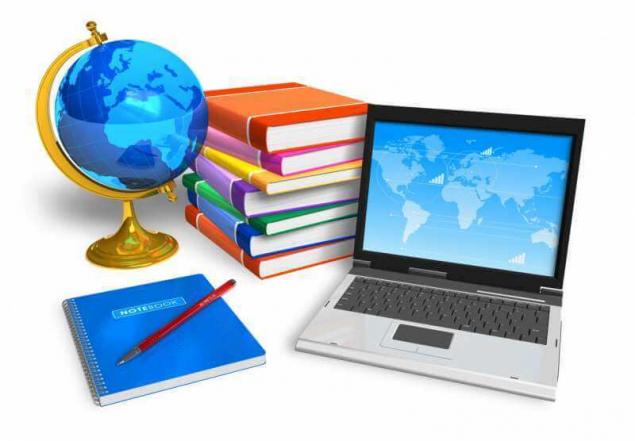
From the point of view of modeling learning situations both quite interesting. Monitor how your friends are "posting cats" and "post selfies" does not fit into the concept of experience, which can be rethought as a case study. The channel of delivery of knowledge has become a supplier of ready-made essays. Traditional paradigm of education, faced with the new tool, instantly capitulated, limiting "downloading finished presentations for classes." Social networks in General have been thrown out of the possible learning situations.
The Achilles heel of modern education
Removing from your Arsenal of pedagogical tools such as social networks, limiting the Internet a list of sites with libraries of presentations we put on the side of formation of a layer of culture that has on the younger generation influence almost more than the school, which, as we know, disappeared — including in these "Internets".
Teen lion's share of their time in social networks, listening to music and talking on specialized resources. But can he look for information? Whether to separate the wheat from the chaff? Understands how to form a picture of friends, so she brought him the seals, and important and useful information? If he knows how to deal with online bullying? Network Scam?

All these are very important questions and they, I think, is no less important than the knowledge of PI to the sixth sign. You tell me that all this is not the task of the school. They say, "Caesar's to Caesar, and locksmith — Slesareva". Social networks — the personal space of the child, and not the business of school to go there.
All right. Personal space should be respected. But who will teach you how to create this space? To care for this garden to bloom and give fruits? Perhaps the notorious losers, "playing" under the Desk on her phone during a lesson, is just not what this phone can use more interesting and more useful? Perhaps the hosts of teenagers sitting "vkontaktike" and have no idea what is "funny pictures" of their friendlist may be saturated with thousands of posts with helpful, educational and motivational information?
And you yourself, dear reader, are you able to shape the ribbon so that it was really intelligent, literate writing for business and professional people? Know how to organize the network of "brainstorming" to solve any professional challenges? Yes, just to have a community response to a pressing question?
It seems to me that today these skills have become almost the most important. "No hundred roubles, and have hundred friends" in a new incarnation is the ability to surround yourself in this community with whom you can solve any problem. Who will help the child to "equip" your own virtual space? Someone tell me and teach? Can the school come into the personal space of social networks?
By the way, not everybody thinks that it is a social network from the point of view of information flow. Because today they took the place of the main supplier of "current" information, replacing Newspapers, television news and radio. Where the child learns about what kind of music are you listening to now? From social networks. About whether or not to watch a new movie? What book to upload to your "reader"? The social network today it is the largest and most powerful aggregator of various information, and the information passed through the prism of experts — all the information coming through this channel, as recommended by people whose opinions decided to trust.The people you included in your my friends page. They with their "posts", "statuses" and links to create those "blocks" which is ultimately the flow of information.
We are responsible for those who tamed
Including the man in his picture of friends we agree that what interested him interested in you. How many times, "sarandev" the man because you saw him once in real life, I regret to find that his "tape" we completely uninteresting, and, moreover, causes irritation? But can it do the children? Teach someone this?

By the way, there is another side of the issue. The fact that there is no single Internet. That is it, the Internet is so big to cast his gaze one person is still impossible. Everyone sees their piece, adjusting it to their needs.
This is especially important. Each Network user willingly or unwillingly builds itself around the information bubble, the contents of which can sometimes be radically different from the neighbors on the Desk. This content depends primarily on the previous experience of the user because the system automatically tries to determine the context and the level of desired response.
"Personalized Google on the query "stem cells" can give opposite results depending on who enters: a scientist supporting stem cell research, or activist who is against them. Request "proof of climate change" can bring different results to the activist-environmentalist and senior Manager of an oil company. During the interviews, it appears that the vast majority of people believe search engines are unbiased. But maybe the fact that they increasingly pander to our tastes. Your computer monitor is fast becoming a "mirror-spy": it reflects your interests, but watching you fix algorithms what you click".
Eli, Preiser,
political activist, Internet activist
It turns out that the inquiring disciple, are constantly using the Internet for educational purposes, adjusts the system "under itself", causing it to produce a result, more relevant educational goals. In contrast, a child who is used in the network only to have fun and look for "cheat moves", get results, more relevant for completely different situations. Do our children? Definitely need to teach it.
But the same thing happens with social networks that adapts issued the results and news in the ribbon, under our personal tastes. And if you "like" cats and "pereposchivayu" frivolous pictures "intelligent" system thinks this is the result most relevant for you. Moreover, here comes in a more commercial interests. Even advertising, through more effective targeting, is relevant and unobtrusive. Many (including me quoted above, Eli, Preiser) are sounding the alarm, fearing that as a result customer information services is becoming more and more manipulated.
But it seems to me that it is because of school, dissolving into life, somehow did not reach this front, and, moreover, withdraws, hiding behind the law on the protection of children from inappropriate content. Meanwhile, it is the inaction of the school in teaching the control of information flows allows to bring down the fragile heads through the muddy stream beyond the control of the school personal communication devices.
What can the school do? Very much. First of all, to describe the mechanisms of formation of information bubbles.
Forewarned is forearmed
If you know how the mechanism content filtering search engine or social network, you're more responsible attitude to their behavior in the network. And sometimes such knowledge disciplinarum more than the school with the Ministry of education. Because not everyone wants to "spoil the karma" by asking "stupid" searches.
But there is a more effective way. The tools of the Internet to form an information bubble around the user, based, mainly, on the basis of his action. That is, teaching the student of this action, creating appropriate learning situations and solving them together with the student, we help to create for him an active plume that will be taken into account, for example, the search engine when ranking results in a natural way at the same time mastering the necessary in our century of expertise.
"Modern information technologies allow not only to use, but customize the operation of the service, to adjust them for yourself and use for their own purposes. For example, we can collect a gallery of photos, maps of their campaigns and to set up a search engine. All these objects form our personal information space. It is a mandatory attribute of the person of the XXI century, and the skills of creating can be seen as an important professional competence. The very appearance of the concept of "personal learning spaces" reflects a radical change in relationship to what the student is doing. From the portfolio, where the main tasks were related evaluation procedure for students, we turn to models in which the learner more responsible for his education, he collects and presents not only final but also intermediate results of their activities. In this model, the emphasis is on self-improvement by the student of their learning environment, in which it would be comfortable to work. The task of the teacher becomes easier — it is necessary to find a way to monitor the activities of its students in all its diversity".
E. D. Patarakin
"Building learning environments from multiple personal "bricks"

And one of such competences is the ability to create a private network environment, a network of information sources, the correct picture of friends. In the words of mitchel Resnick, we find ourselves in the network "teaching kindergarten for life". This is a very precise definition. The network can provide the pile of toys and mindless entertainment. But can help to organize the educational space, which will accompany human life, are constantly "tossing" all new and new portions of the material for self-education.
We all need simple items and tools that would help to think, act and build its own intelligence structure. And the ability to use the network for forming the Arsenal of these tools.
This kindergarten is really for life — learning in the modern world never stops and never finishes. But at the initial stage is very important one who will show and tell about the proper "patterns" of behavior in the network, will help from the strange amorphous tool to create a powerful educational product. School, dissolving into life, just have to get on the social network, on the side of the teenager.
"Mobility does not mean that the school is everywhere, but that the school follows the teacher: using media services, and given the context, "adjacent" places, it can affect the flow of information, implementing the educational process or create an opportunity for infiltration. In short: a school where the teacher — this is his role."
I. Yu. Travkin
"The school and the teacher in the media city"
The school follows the teacher
So why the teacher is not social media, not influence the formation of adolescents?
I don't happen to devote much time to the "proper friends".
"The network has ceased to be merely a medium of information transmission and transport channel delivery knowledge. It became a place where students are constantly where they perform independent actions with social services that help them to think and act together."
E. D. Patarakin
Friendlist social network is one of those places where students are constantly, the library from which they draw resources, environment, which can be used both for good and harm. The skilled person, by choosing the right expert-authors in your feed, you can turn it into a very powerful educational tool.
A few years ago, Andrey Miroshnichenko came up with the idea of the existence of "viral editor" — collective authorship, community, picking out the really interesting materials with a mechanism reminiscent of Wikipedia:
"...I tried to justify the existence of the Internet spontaneous network filter importance, which I called "viral editor". This viral editor is based on the theme of the omnipresence of bloggers, which is a lot, so they accidentally, but necessarily raised, including significant themes.
And then found the theme, if it is evaluated as significant falls in viral distribution. Reprinting a message or referring to it, every blogger sure hopes that his post will also be interesting, relevant and will resonate. Thus, step by step focuses the importance of the original topic. At some point the effect of the frequency, when the fact of the treatment of a large number of people to the subject further increases its relevance to new readers ("everyone's talking about it"). Turn on the second level of sublimation value. And as a result, the concentration of significance can reach social proportions. Thus, the freedom of personal reactions and the freedom of authorship on the Internet leads not only to an unimaginable noise and cacophony, but has built-in mechanisms to develop a significance that allows you to turn of the noise in a hierarchical homing procedure. In real life this function of cleaning the excess opinions, developing value and selection of social reference points is performed media. In Internet spontaneous viral editor.
Viral editor — network entity, he is everywhere and nowhere. Unlike the media, he is not guided by the will and even is not a sum of wills, and there are amount of free reactions, necessarily arranged in a circuit that does not belong to anyone.
But it is clear that the behavior of the viral editor in some way summarizes the views of its members on the importance. And who are these people?
Immediately all the answers to this question with sadness: this is often bad people. The most active and crowded the doorway and anger, on the Internet a lot of unwarranted nastiness and swearing. Therefore, the viral editor, he says, is to summarize this stuff. In fact, the opposite is true".
Andrey Miroshnichenko, referring to the "viral editor", speaks of it as a global phenomenon, capable of competing with the state.
But we need more "intimate" aspect of it. The fact that each social network has its own "viral editor", consisting of a representative for this particular individual author-experts. They make up its community network. And it is because of the materials recommended by them, their texts and commentaries, from both the "bricks", is his picture of the world. And that's what the online community can become the basis for "teaching kindergarten for life".
I will quote again E. D. Patarakin:
"The learning environment resembles an ecosystem that is in continuous development and consists of the actions and interests of many people.
We have to play new roles, develop new habits and learn new forms and methods of activity. These changes occur only because there are new technical tools that we ourselves invent. As new means of activities included in the community, between the means and the people who use them, is a collaborative process of evolutionary change. Downes notes that of the environment in which people receive information: read the news, listened to radio, watched TV – the world wide Web becomes the platform upon which the communication of people, and the modern dictionary includes a variety of multimedia formats."
You may be interested in: Andrei Fursov: I'm tired of save the children, hurt the exam
77% of teenagers can't imagine life without a smartphone, even in summer
Teaching is the process of connecting, pairing specialized components and knowledge sources. That is not a social network today is able to match the opinions of various experts, to connect the different nodes of knowledge? And business schools — to teach to do it. It's for life.published
Author: Anatoly Shperh
P. S. And remember, only by changing their consumption — together we change the world! ©
Source: newtonew.com/discussions/instant-school
There is, of course, school, and basic school buildings have not gone away. But its place in a child's life is rapidly declining.
You want your child passed the exam? Surely you expect not only in school, and looking for a tutor "on the side".
A child interested in sports? You lead him in the sports section, and this section is, most likely, not in school. "Dramatic circle, the circle on the picture," all of this — not in school. The school is scattered in clusters, scattered in different places. And traditional school — only one of them.

The school dissolved in ordinary life, the cloud surrounds the child and leads him, supporting and guiding. It is everywhere and nowhere. The walls of the classroom long ago crumbled, even if we still sometimes sit in the classroom listening to the teacher. School is not the place on which hangs a sign "GBOU SOSH". School (at the time) is getting any space, which is here and now used for training. In this sense, built specifically for training school building can not be a main educational space.
What kind of place can become the main? The answer is paradoxical — any where there is a possibility of a constructive activity for the student. Not passive consumption of information, namely the active constructive work, when he not only uses resources but also actively participates in their development. And actively sharing results with peers. The latter is very important, since it allows not only to assess their level of mastery relative to others, but to be in the role of an expert assessing the work of others. Trying on alternately as a pupil, master and expert, the child passes all stages of learning.
Such activities may carry and spontaneous — this definition fits the yard and passion, "who will make a slingshot that shoots furthest," but the true power of this activity gets only where it is planned specifically. Initially, this learning environment was the school. However, competent pedagogical designer can turn into the educational environment almost any place. Main thing is to ensure the transfer of experience in content learning situations and to strengthen the students in it. This is a space for learning outside of the classroom. As already mentioned, such a space can be anything. And especially the virtual space that you can build up "blocks" of learning situations is much easier than a real space.
Better than chalk and Board nothing?
Education community is traditionally wary of the space network. "Better than chalk and Board nothing." This point is well taken. The school boards are really serious advantages. First of all, the Board is "friendly tool".
"On the Board the teacher writes on the Board and write students. They can correct the texts, diagrams and drawings to each other. All participants can build on already drawn, recorded content and add new content. The Board in this case is a good example of the shared resource, an example of space that is used for the collective activities of a group of people. This is its best contrast of the presentation, which serves as the Board for individual use".
E. D. Patarakin
"Joint construction of knowledge and
mutual adaptation of the co-authors within the hypertext WikiWiki"
The network is traditionally considered as a passive phenomenon: either as a medium of information transmission and transport channel of delivery of knowledge (the traditional Web), or as a means to monitor each other's activities (social networks).

From the point of view of modeling learning situations both quite interesting. Monitor how your friends are "posting cats" and "post selfies" does not fit into the concept of experience, which can be rethought as a case study. The channel of delivery of knowledge has become a supplier of ready-made essays. Traditional paradigm of education, faced with the new tool, instantly capitulated, limiting "downloading finished presentations for classes." Social networks in General have been thrown out of the possible learning situations.
The Achilles heel of modern education
Removing from your Arsenal of pedagogical tools such as social networks, limiting the Internet a list of sites with libraries of presentations we put on the side of formation of a layer of culture that has on the younger generation influence almost more than the school, which, as we know, disappeared — including in these "Internets".
Teen lion's share of their time in social networks, listening to music and talking on specialized resources. But can he look for information? Whether to separate the wheat from the chaff? Understands how to form a picture of friends, so she brought him the seals, and important and useful information? If he knows how to deal with online bullying? Network Scam?

All these are very important questions and they, I think, is no less important than the knowledge of PI to the sixth sign. You tell me that all this is not the task of the school. They say, "Caesar's to Caesar, and locksmith — Slesareva". Social networks — the personal space of the child, and not the business of school to go there.
All right. Personal space should be respected. But who will teach you how to create this space? To care for this garden to bloom and give fruits? Perhaps the notorious losers, "playing" under the Desk on her phone during a lesson, is just not what this phone can use more interesting and more useful? Perhaps the hosts of teenagers sitting "vkontaktike" and have no idea what is "funny pictures" of their friendlist may be saturated with thousands of posts with helpful, educational and motivational information?
And you yourself, dear reader, are you able to shape the ribbon so that it was really intelligent, literate writing for business and professional people? Know how to organize the network of "brainstorming" to solve any professional challenges? Yes, just to have a community response to a pressing question?
It seems to me that today these skills have become almost the most important. "No hundred roubles, and have hundred friends" in a new incarnation is the ability to surround yourself in this community with whom you can solve any problem. Who will help the child to "equip" your own virtual space? Someone tell me and teach? Can the school come into the personal space of social networks?
By the way, not everybody thinks that it is a social network from the point of view of information flow. Because today they took the place of the main supplier of "current" information, replacing Newspapers, television news and radio. Where the child learns about what kind of music are you listening to now? From social networks. About whether or not to watch a new movie? What book to upload to your "reader"? The social network today it is the largest and most powerful aggregator of various information, and the information passed through the prism of experts — all the information coming through this channel, as recommended by people whose opinions decided to trust.The people you included in your my friends page. They with their "posts", "statuses" and links to create those "blocks" which is ultimately the flow of information.
We are responsible for those who tamed
Including the man in his picture of friends we agree that what interested him interested in you. How many times, "sarandev" the man because you saw him once in real life, I regret to find that his "tape" we completely uninteresting, and, moreover, causes irritation? But can it do the children? Teach someone this?

By the way, there is another side of the issue. The fact that there is no single Internet. That is it, the Internet is so big to cast his gaze one person is still impossible. Everyone sees their piece, adjusting it to their needs.
This is especially important. Each Network user willingly or unwillingly builds itself around the information bubble, the contents of which can sometimes be radically different from the neighbors on the Desk. This content depends primarily on the previous experience of the user because the system automatically tries to determine the context and the level of desired response.
"Personalized Google on the query "stem cells" can give opposite results depending on who enters: a scientist supporting stem cell research, or activist who is against them. Request "proof of climate change" can bring different results to the activist-environmentalist and senior Manager of an oil company. During the interviews, it appears that the vast majority of people believe search engines are unbiased. But maybe the fact that they increasingly pander to our tastes. Your computer monitor is fast becoming a "mirror-spy": it reflects your interests, but watching you fix algorithms what you click".
Eli, Preiser,
political activist, Internet activist
It turns out that the inquiring disciple, are constantly using the Internet for educational purposes, adjusts the system "under itself", causing it to produce a result, more relevant educational goals. In contrast, a child who is used in the network only to have fun and look for "cheat moves", get results, more relevant for completely different situations. Do our children? Definitely need to teach it.
But the same thing happens with social networks that adapts issued the results and news in the ribbon, under our personal tastes. And if you "like" cats and "pereposchivayu" frivolous pictures "intelligent" system thinks this is the result most relevant for you. Moreover, here comes in a more commercial interests. Even advertising, through more effective targeting, is relevant and unobtrusive. Many (including me quoted above, Eli, Preiser) are sounding the alarm, fearing that as a result customer information services is becoming more and more manipulated.
But it seems to me that it is because of school, dissolving into life, somehow did not reach this front, and, moreover, withdraws, hiding behind the law on the protection of children from inappropriate content. Meanwhile, it is the inaction of the school in teaching the control of information flows allows to bring down the fragile heads through the muddy stream beyond the control of the school personal communication devices.
What can the school do? Very much. First of all, to describe the mechanisms of formation of information bubbles.
Forewarned is forearmed
If you know how the mechanism content filtering search engine or social network, you're more responsible attitude to their behavior in the network. And sometimes such knowledge disciplinarum more than the school with the Ministry of education. Because not everyone wants to "spoil the karma" by asking "stupid" searches.
But there is a more effective way. The tools of the Internet to form an information bubble around the user, based, mainly, on the basis of his action. That is, teaching the student of this action, creating appropriate learning situations and solving them together with the student, we help to create for him an active plume that will be taken into account, for example, the search engine when ranking results in a natural way at the same time mastering the necessary in our century of expertise.
"Modern information technologies allow not only to use, but customize the operation of the service, to adjust them for yourself and use for their own purposes. For example, we can collect a gallery of photos, maps of their campaigns and to set up a search engine. All these objects form our personal information space. It is a mandatory attribute of the person of the XXI century, and the skills of creating can be seen as an important professional competence. The very appearance of the concept of "personal learning spaces" reflects a radical change in relationship to what the student is doing. From the portfolio, where the main tasks were related evaluation procedure for students, we turn to models in which the learner more responsible for his education, he collects and presents not only final but also intermediate results of their activities. In this model, the emphasis is on self-improvement by the student of their learning environment, in which it would be comfortable to work. The task of the teacher becomes easier — it is necessary to find a way to monitor the activities of its students in all its diversity".
E. D. Patarakin
"Building learning environments from multiple personal "bricks"

And one of such competences is the ability to create a private network environment, a network of information sources, the correct picture of friends. In the words of mitchel Resnick, we find ourselves in the network "teaching kindergarten for life". This is a very precise definition. The network can provide the pile of toys and mindless entertainment. But can help to organize the educational space, which will accompany human life, are constantly "tossing" all new and new portions of the material for self-education.
We all need simple items and tools that would help to think, act and build its own intelligence structure. And the ability to use the network for forming the Arsenal of these tools.
This kindergarten is really for life — learning in the modern world never stops and never finishes. But at the initial stage is very important one who will show and tell about the proper "patterns" of behavior in the network, will help from the strange amorphous tool to create a powerful educational product. School, dissolving into life, just have to get on the social network, on the side of the teenager.
"Mobility does not mean that the school is everywhere, but that the school follows the teacher: using media services, and given the context, "adjacent" places, it can affect the flow of information, implementing the educational process or create an opportunity for infiltration. In short: a school where the teacher — this is his role."
I. Yu. Travkin
"The school and the teacher in the media city"
The school follows the teacher
So why the teacher is not social media, not influence the formation of adolescents?
I don't happen to devote much time to the "proper friends".
"The network has ceased to be merely a medium of information transmission and transport channel delivery knowledge. It became a place where students are constantly where they perform independent actions with social services that help them to think and act together."
E. D. Patarakin
Friendlist social network is one of those places where students are constantly, the library from which they draw resources, environment, which can be used both for good and harm. The skilled person, by choosing the right expert-authors in your feed, you can turn it into a very powerful educational tool.
A few years ago, Andrey Miroshnichenko came up with the idea of the existence of "viral editor" — collective authorship, community, picking out the really interesting materials with a mechanism reminiscent of Wikipedia:
"...I tried to justify the existence of the Internet spontaneous network filter importance, which I called "viral editor". This viral editor is based on the theme of the omnipresence of bloggers, which is a lot, so they accidentally, but necessarily raised, including significant themes.
And then found the theme, if it is evaluated as significant falls in viral distribution. Reprinting a message or referring to it, every blogger sure hopes that his post will also be interesting, relevant and will resonate. Thus, step by step focuses the importance of the original topic. At some point the effect of the frequency, when the fact of the treatment of a large number of people to the subject further increases its relevance to new readers ("everyone's talking about it"). Turn on the second level of sublimation value. And as a result, the concentration of significance can reach social proportions. Thus, the freedom of personal reactions and the freedom of authorship on the Internet leads not only to an unimaginable noise and cacophony, but has built-in mechanisms to develop a significance that allows you to turn of the noise in a hierarchical homing procedure. In real life this function of cleaning the excess opinions, developing value and selection of social reference points is performed media. In Internet spontaneous viral editor.
Viral editor — network entity, he is everywhere and nowhere. Unlike the media, he is not guided by the will and even is not a sum of wills, and there are amount of free reactions, necessarily arranged in a circuit that does not belong to anyone.
But it is clear that the behavior of the viral editor in some way summarizes the views of its members on the importance. And who are these people?
Immediately all the answers to this question with sadness: this is often bad people. The most active and crowded the doorway and anger, on the Internet a lot of unwarranted nastiness and swearing. Therefore, the viral editor, he says, is to summarize this stuff. In fact, the opposite is true".
Andrey Miroshnichenko, referring to the "viral editor", speaks of it as a global phenomenon, capable of competing with the state.
But we need more "intimate" aspect of it. The fact that each social network has its own "viral editor", consisting of a representative for this particular individual author-experts. They make up its community network. And it is because of the materials recommended by them, their texts and commentaries, from both the "bricks", is his picture of the world. And that's what the online community can become the basis for "teaching kindergarten for life".
I will quote again E. D. Patarakin:
"The learning environment resembles an ecosystem that is in continuous development and consists of the actions and interests of many people.
We have to play new roles, develop new habits and learn new forms and methods of activity. These changes occur only because there are new technical tools that we ourselves invent. As new means of activities included in the community, between the means and the people who use them, is a collaborative process of evolutionary change. Downes notes that of the environment in which people receive information: read the news, listened to radio, watched TV – the world wide Web becomes the platform upon which the communication of people, and the modern dictionary includes a variety of multimedia formats."
You may be interested in: Andrei Fursov: I'm tired of save the children, hurt the exam
77% of teenagers can't imagine life without a smartphone, even in summer
Teaching is the process of connecting, pairing specialized components and knowledge sources. That is not a social network today is able to match the opinions of various experts, to connect the different nodes of knowledge? And business schools — to teach to do it. It's for life.published
Author: Anatoly Shperh
P. S. And remember, only by changing their consumption — together we change the world! ©
Source: newtonew.com/discussions/instant-school
Electric tow tractor Nikola One available for pre-order
After these exercises, will disappear 2 unpleasant phenomena that give away Your age






